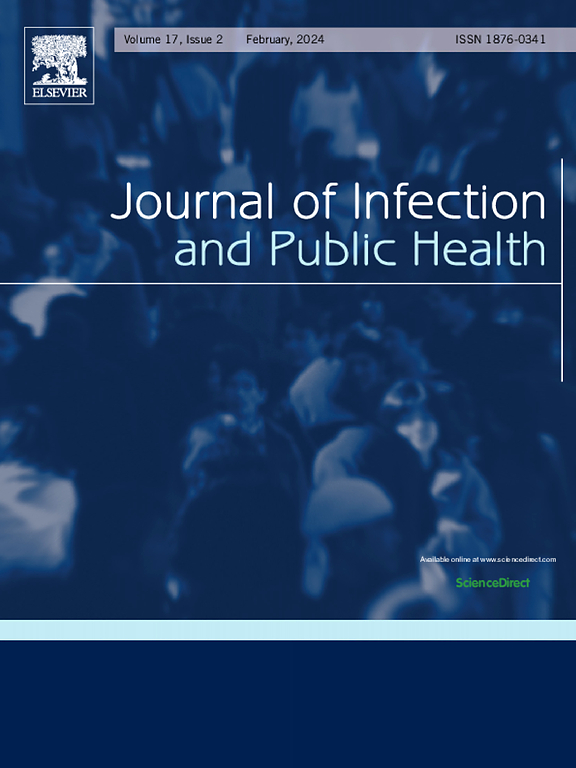解锁传统植物抗病毒潜能:针对人偏肺病毒(HMPV)的多方法计算研究
IF 4
3区 医学
Q1 INFECTIOUS DISEASES
引用次数: 0
摘要
人偏肺病毒(HMPV)是呼吸道感染的主要原因,特别是在易感人群中。缺乏靶向抗病毒治疗需要探索新的候选药物。传统药用植物提供了具有潜在抗病毒特性的生物活性化合物的储存库。本研究采用多方法计算方法来评估植物化学物质对HMPV的抗病毒潜力。方法采用虚拟筛选、分子对接、分子动力学(MD)模拟、密度泛函数理论(DFT)计算、药效团建模、吸收、分布、代谢、排泄和毒性(ADMET)分析等综合的计算机框架。评估了关键的生物活性化合物的结合亲和力、稳定性和药代动力学性质。结果甘草酸的结合亲和力最高(-65.4 kcal/mol),氢键强,动态稳定性好(RMSD 1.3 Å)。Withaferin A(-63.7 kcal/mol)也表现出较高的药代动力学潜力。DFT分析证实了它们良好的电子特性,ADMET分析证实了它们的药物样特性。这些发现突出了天然化合物作为潜在HMPV抑制剂的前景。结论本研究强调了传统植物化学物质在抗病毒药物开发中的潜力。计算技术的集成加速了引线识别和优化。进一步的体外和体内验证对于确认这些发现和促进临床转化至关重要。本文章由计算机程序翻译,如有差异,请以英文原文为准。
Unlocking antiviral potentials of traditional plants: A multi-method computational study against human metapneumovirus (HMPV)
Background
Human metapneumovirus (HMPV) is a major cause of respiratory infections, especially in vulnerable populations. The absence of targeted antiviral therapies necessitates the exploration of novel drug candidates. Traditional medicinal plants offer a reservoir of bioactive compounds with potential antiviral properties. This study employs a multi-method computational approach to assess the antiviral potential of phytochemicals against HMPV.
Methods
A comprehensive in silico framework was employed, including virtual screening, molecular docking, molecular dynamics (MD) simulations, density functional theory (DFT) calculations, pharmacophore modeling, and Absorption, Distribution, Metabolism, Excretion, and Toxicity (ADMET) profiling. Key bioactive compounds were evaluated for their binding affinity, stability, and pharmacokinetic properties.
Results
Among the analyzed phytochemicals, Glycyrrhizin exhibited the highest binding affinity (-65.4 kcal/mol) with strong hydrogen bonding and remarkable dynamic stability (RMSD 1.3 Å). Withaferin A (-63.7 kcal/mol) also demonstrated high pharmacokinetic potential. DFT analyses confirmed their favorable electronic properties, and ADMET profiling validated their drug-like characteristics. These findings highlight the promise of natural compounds as potential HMPV inhibitors.
Conclusions
This study underscores the potential of traditional phytochemicals in antiviral drug discovery. The integration of computational techniques accelerates lead identification and optimization. Further in vitro and in vivo validations are essential to confirm these findings and facilitate clinical translation.
求助全文
通过发布文献求助,成功后即可免费获取论文全文。
去求助
来源期刊

Journal of Infection and Public Health
PUBLIC, ENVIRONMENTAL & OCCUPATIONAL HEALTH -INFECTIOUS DISEASES
CiteScore
13.10
自引率
1.50%
发文量
203
审稿时长
96 days
期刊介绍:
The Journal of Infection and Public Health, first official journal of the Saudi Arabian Ministry of National Guard Health Affairs, King Saud Bin Abdulaziz University for Health Sciences and the Saudi Association for Public Health, aims to be the foremost scientific, peer-reviewed journal encompassing infection prevention and control, microbiology, infectious diseases, public health and the application of healthcare epidemiology to the evaluation of health outcomes. The point of view of the journal is that infection and public health are closely intertwined and that advances in one area will have positive consequences on the other.
The journal will be useful to all health professionals who are partners in the management of patients with communicable diseases, keeping them up to date. The journal is proud to have an international and diverse editorial board that will assist and facilitate the publication of articles that reflect a global view on infection control and public health, as well as emphasizing our focus on supporting the needs of public health practitioners.
It is our aim to improve healthcare by reducing risk of infection and related adverse outcomes by critical review, selection, and dissemination of new and relevant information in the field of infection control, public health and infectious diseases in all healthcare settings and the community.
 求助内容:
求助内容: 应助结果提醒方式:
应助结果提醒方式:


